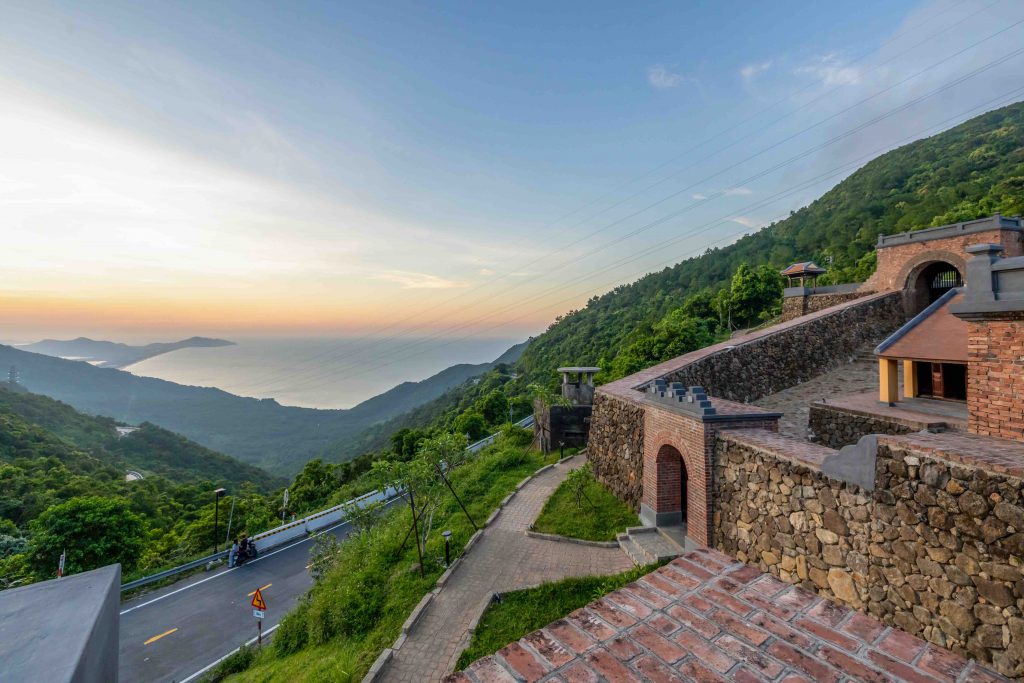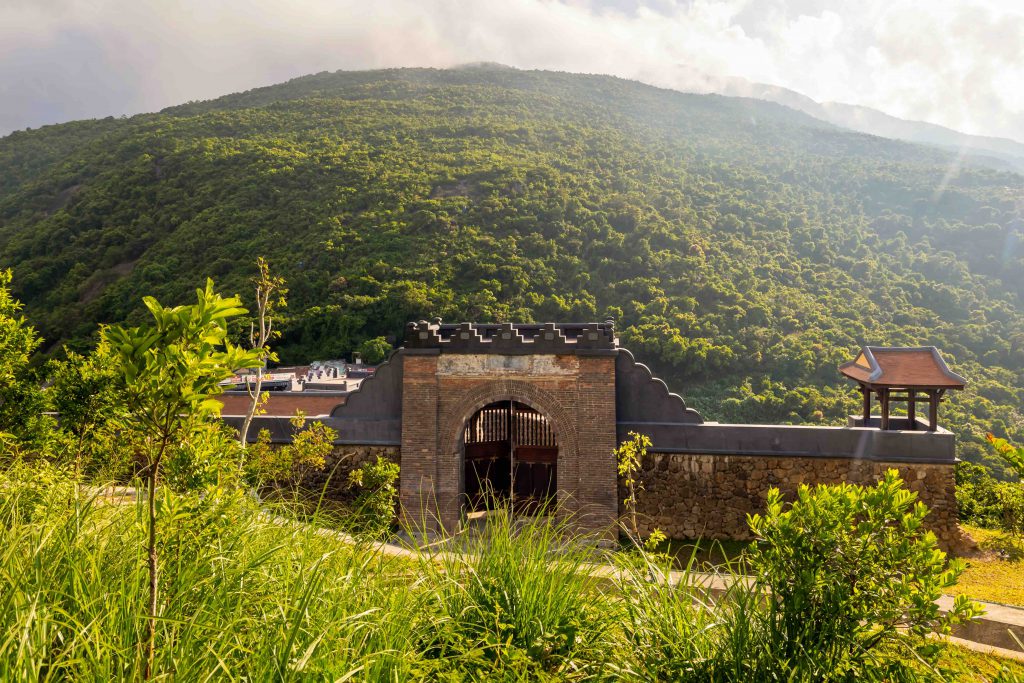Story: Nguyen Phuoc Bao Dan
Photos: Phong Nguyen
The “mountain gate” or fortress of Hai Van Quan stands on top of Hai Van Mountain. Also known as Ai Van or Ngai Lanh, this military building is strategically located on the old Annam Road. In imperial times, it protected the royal capital of Hue to the south.

An impressive check-in spot
“Hai Van” means “sea and clouds”, while “Ai Van” means “a gate in the clouds”. These names evoke a fortress set between the sea and the mountains, perpetually shrouded in clouds. A folk song once popular with people in Central Vietnam reflects their awe of this site:
Walking up Hai Van is terrifying,
Sailing through the waves of Hang Doi is terrifying.
After warfare and harsh weather took their toll, in August 2024, the Hai Van Quan relic site was fully restored and opened to the public, free of charge. This large-scale restoration project resulted from a historic partnership between Thua Thien Hue Province and Danang City, the two localities that share ownership of this relic, as Hai Van Quan straddles their administrative borders.
The restoration project began in 2021. After three years of work, the complete Hai Van Quan complex has been restored, including the original fortress, the Tru So building (where the garrison commander ate and slept), the Vu Kho armory (where weapons were stored), the ramparts, cannon embrasures, side gates, and watchtowers. All of these structures bear distinct architectural features of the Nguyen dynasty.
Hai Van Quan is located at an altitude of nearly 500 meters above sea level. Surrounded by the vast sea and sky, visitors feel as if they are standing amidst the clouds, on a military site that contains many important historic and cultural values from the monarchical era. They can see Lang Co – voted one of the 30 most beautiful bays in the world, and look toward the young and dynamic city of Danang. Every vantage point at Hai Van Quan makes visitors feel like they’ve stepped into a watercolor painting or a masterpiece of nature.

Hai Van Pass – The world’s most magnificent gateway
Geographically, Hai Van Pass is part of the Bach Ma mountain range, which juts into the sea as one of the “playful legs of the Truong Son mountain system”. The Bach Ma range serves as a climatic barrier between the northern and southern regions of Truong Son.
Tracing historical records, since 1306, following the marriage of Princess Huyen Tran of the Tran dynasty to King Che Man of Champa (Jaya Simhavarman III), the lands of the two regions, O and Ly, became the southern frontier of Dai Viet, known as Thuan Hoa. Due to its strategic location, a military outpost was soon established at the summit of Hai Van.
This site was later inherited by the Ho, Later Le, and especially the Nguyen dynasties. In 1471, during a southern campaign, King Le Thanh Tong paused to admire the picturesque scenery at this strategic site, declaring it “the most magnificent gateway in the world“. In 1602, while surveying the geography in search of a site for a stronghold for his lineage, Lord Nguyen Hoang observed the long stretch of high mountains extending to the sea and praised it as “the throat of the Thuan Quang region”. He crossed the mountains to assess this terrain and established a military garrison in Can Huc village (now part of Duy Xuyen District, Quang Nam). There, he built warehouses and stored provisions, appointing his sixth son, Nguyen Phuc Nguyen, to guard this garrison.
After unifying the country from Nam Quan Pass to Cape Ca Mau, King Gia Long ordered the construction of a system of relay stations on the route over Hai Van Pass and appointed officials to oversee Hai Van Quan. In the seventh year of the rule of King Minh Mang (1826), on an auspicious day, the king commissioned the construction of Hai Van Quan. The Dai Nam Thuc Luc records: “The gate was built at the peak of Hai Van, with a gate at the front and another at the back. The front arch bears the three characters “Hai Van Quan”, while the rear arch reads “The Most Magnificent Gateway in the World”. In the 17th year of Minh Mang (1836), “the king also provided a telescope to observe the sea, requiring foreign vessels entering Danang to notify this gate in advance”. In the same year, when casting the Nine Dynastic Urns, the king ordered the image of Hai Van Quan to be engraved on the Du urn, the eighth urn placed in front of The Mieu in the Imperial City of Hue. These historical records clearly outline the origins of Hai Van Quan during the Nguyen dynasty, reflecting various lords’ and kings’ recognition of the strategic importance of this gateway atop Hai Van over the centuries.

In the late 17th century, during a visit to Thuan Hoa at the invitation of Minh Vuong Nguyen Phuc Chu (1691-1725), the Chinese monk Thich Dai San (1633-1704) crossed Hai Van. In his book Hai Ngoai Ky Su, he described the route through the mountains as treacherous, impassable by horse, requiring travelers to walk or be carried in hammocks. The narrow, precarious track clung to the mountainside, with a chasm on one side. Travelers often walked through thick fog, which soaked their clothes. The air was fragrant with herbs, and occasionally, they would hear a rushing sound and catch glimpses of the vast ocean, only to realize upon closer inspection that it was merely a sea of clouds. From Quang Nam to Thuan Hoa, one had to navigate nine bends and stay at relay stations for three consecutive nights to cross this mountain range.
Over the past four centuries, human ingenuity and labor have made Hai Van Pass less perilous to cross. The ancient road has been widened into National Route 1A, and stone steps have been replaced with cement stairs. When visiting Hue, you should take the road over Hai Van Pass to enjoy this region’s stunning beauty. With its many hairpin turns, this road offers a thrilling experience, rewarding travelers with breathtaking views, cliffs, waterfalls, and forests on one side and the vast ocean on the other. Be sure to visit the ancient fortress of Hai Van Quan. Facing north, you can see the peaceful land of the ancient capital. To the south lies the vibrant skyline of Danang, its high-rise buildings rimming a crescent-shaped bay.










